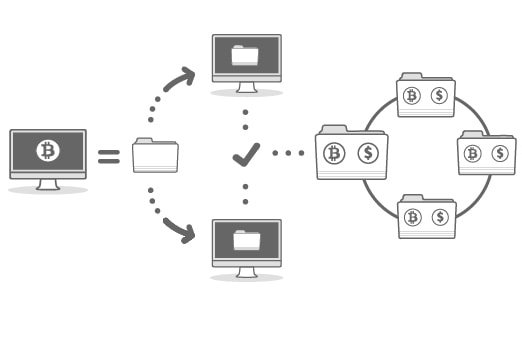
Heinz College Students Add Links To Blockchain Knowledge
By Scottie Barsotti
Media Inquiries- Heniz College of Information and Public Policy
- 412-268-5429
Students at Carnegie Mellon University's Heinz College of Information Systems and Public Policy have partnered with international corporations to learn more about blockchains and how they can aid businesses.
Blockchains are distributed digital databases that contain a chronological record of transactions. The records are spread across multiple computers so there is no single point of vulnerability for hackers to attack. For a new transaction to be added, the transaction must be verified by a majority of the computers. Once the verified transaction has been added to other similar transactions, they are bundled together. While the records can be amended and expanded, the process makes it highly unlikely for the information to be changed and is considered virtually tamper-proof.
What is a blockchain?

Blockchains are transaction databases spread across computers that will verify and bundle.
One of the uses of blockchain technology is called a "smart contract," which automatically executes transactions that remit and accept payments when an agreement's terms are fulfilled. Eventually, smart contracts could lead to businesses "staffed" by algorithms, allowing for fully automated operations that transact with other algorithms and also consumers.
Ongoing adoption of the technology by the financial services industry is expected to eventually cut costs, regulate transactions and make global markets more inclusive.
As part of a graduate capstone project in the Heinz Master of Information Systems Management program, students considered possible impacts, viability and security implications of blockchain in healthcare, finance, retail operations, energy, farming, transportation and document management.
The students explored how blockchains are being used, mapped out use cases and failures, and created a risk framework for each sector. The team's dataset initially included 228 potential blockchain use cases, but after review of source code and business models related to the information, they ended up with 21 cases where blockchain technology was used.
"What we found was that, even though a number of companies are touting innovative uses of 'blockchain technology,' it all too often remains little more than a marketing buzzword, and the products offered actually do not have much to do with distributed ledgers. We did find, however, a number of legitimate, interesting uses," said Nicolas Christin, who was the project's faculty adviser.
"Though blockchain adoption is still in its infancy, the students were able to demystify it for the client. Their thoroughness and determination had a definite impact. By creating a repeatable methodology for risk assessment, they provided a valuable tool for the client moving forward," Christin said.
Global news and information firm Thomson Reuters, who has sponsored Heinz College projects in the past, also offered students an opportunity to research applications for blockchain in the burgeoning Internet of Things.
Applications

"We see tremendous crossover between the Internet of Things and the Identity of Things," said Robert Schukai, global head of Design, Digital Identity at Thomson Reuters. "It isn't enough to just have information from sensors and other devices; it is also important to know what those sensors are and that the sensor content itself is secure and accurate. Corrupted content can have tremendous impact on commodity prices and markets. Blockchain technology can potentially solve both of these challenges."
The student team focused on agriculture where connected devices are widely used. Farmers use Internet-enabled devices to monitor crops and conditions to improve yield. If those sensors could be identified and authenticated in an efficient, standardized way, it would not only have direct benefits to farmers assessing networks, it also would help U.S. Department of Agriculture auditors, who could use the data to ensure food safety during packing, handling and storing.
The students created a prototype system that securely managed the identity of connected sensors on a fictional farm.
"We are thrilled with the project results and are continually impressed at the caliber of the work, the passion of the students, and the excitement that comes with working on cutting-edge technology," Schukai said.